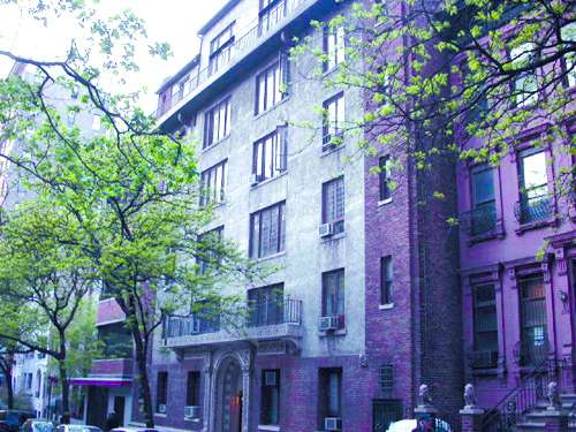Landmarks Commission Expands Historic District

Church of St. Paul the Apostle named landmark
The New York City Landmarks Preservation Commission voted June 25 unanimously to approve the designations of the West End Collegiate Historic District Extension on Manhattan's Upper West Side and eight stand-alone sites as landmarks.
Among them are the c. 1885 Medieval Revival style Church of St. Paul the Apostle at 8 Columbus Ave., and the corner of 60th Street, the c. 1905 Beaux-Arts style Hotel Grand Union (formerly the Hotel St. Louis) at 34 East 32nd St., and the c. 1913 Arts and Crafts style Beaumont Apartments at 730 Riverside Drive at the corner of 150th Street in Manhattan.
The West End-Collegiate Historic District Extension encompasses 220 residential and institutional buildings on the east and west sides of West End Avenue between West 70th and 79th Streets, and more than doubles the size of the existing 150-building West End-Collegiate Historic District. Named for the nearby West End Collegiate Church (an individual New York City landmark) and designated in 1984, the district is bounded by West 78th and 74th Streets, mostly along West End Avenue. "The expanded district includes an extraordinary array of buildings that amplify the existing historic streetscapes, and deserve to share the same degree of protection," said Robert B. Tierney, chairman of the NYC Landmarks Preservation Commission.
The West End-Collegiate Historic District Extension is the second of two historic district extensions that have been approved by the Commission on the Upper West Side in the past year. The Riverside Drive-West End Historic District Extension I, designated in June 2013, encompasses 190 buildings. A public hearing was held in October 2011 on a proposal for a third extension on the Upper West Side, the proposed 335-building Riverside Drive-West End Historic District Extension II. The buildings in the extension were constructed between the mid-1880s and late 1920s, a period of intense development during which the area was transformed from farmland to a dense urban enclave.
The first wave of development occurred between the mid-1880s and the turn of the 20th century, when many of the city's most prominent architects including C.P.H. Gilbert, Henry J.Hardenbergh, Clarence True and George F. Pelham were hired to design the single-family row houses that dominate the extension's side streets. They produced a picturesque collection of residences in the neo-Grec, Romanesque Revival, Renaissance Revival, Queen Anne and Beaux Arts styles that were executed in brownstone, brick and limestone. In the 1890s, as apartment living became an acceptable housing alternative for affluent New Yorkers, developers began to build small, six-to-nine story apartment houses, called "French flats," that resembled the style, scale and materials for the neighboring brownstones.
Church of St. Paul the Apostle, 8 Columbus Ave. at West 60th Street
The Medieval Revival style Church of St. Paul the Apostle was the second largest church in the United States, after St. Patrick's Cathedral on Fifth Avenue in Manhattan, when it was completed in 1885. The church was commissioned by the Paulist Fathers, a Roman Catholic missionary society founded in 1858 in New York City by Father Isaac Hecker, the brother of the founder of a prominent flour manufacturer.
The church, which can hold as many as 4,400 people, replaced the Paulists' original sanctuary that stood on part of the existing site. George Deshon, a Paulist priest who trained at West Point as a military engineer and designed a number of Catholic churches, later took over the project from O'Rourke.
Faced with grey and pink-tinted stone of varying sizes salvaged from the Croton Aqueduct and the former Booth's Theater at Sixth Avenue and 23rd Street, the church design may have been influenced by that of the 13th-century Basilica of Santa Croce in Florence. Both buildings share similar dimensions, unusually wide naves, arcades with pointed profiles and windows set high on the outer walls.
In 1959, a 60-foot-long, 50-ton blue mosaic and white marble bas-relief by the American muralist and illustrator Lumen Martin Winter depicting the conversion of St. Paul the Apostle from Judaism to Christianity was installed in the broad recess between the two 114-foot-towers that flank the building. As bankruptcy loomed in 1973, the parish considered a proposal to demolish the church, but instead sold part of its site and development rights in the mid-1980s. The building is undergoing a major restoration.
"This austere building stands like a fortress among the other major institutions nearby, holding the line between the mostly residential Upper West Side to the north and midtown Manhattan to the south," said Tierney. "It's a remarkable survivor."
Beaumont Apartments, 730 Riverside Drive, Hamilton Heights, Manhattan
Located at the corner of 150th Street, the 11-story Beaumont Apartments building was constructed between 1912 and 1913 and designed by (George) Blum and (Edward) Blum, an architectural firm that specialized in apartment houses featuring novel uses of bricks and tiles. An example of the Arts and Crafts style, the Beaumont was constructed at a time of rapid development of the Upper West Side of Manhattan that followed the completion of Riverside Park and the arrival of the Seventh Avenue subway line nearby. The building is noteworthy for its geometric brick patterns suggestive of woven textiles and for its terra-cotta tiles and foliate ornament, projecting balconettes, and plaques depicting eagles, parakeets and owls, a possible reference to the building's proximity to John J. Audubon's former estate. A number of famous tenants lived in the Beaumont over the years, including U.S. Representative Jacob K. Javits; the legendary African-American contralto Marian Anderson; and Ralph W. Ellison, the noted African-American author of "Invisible Man," who lived in the building for four decades until his death in 1994. "The Beaumont is an important work of architecture that housed, and perhaps inspired, some of the greatest, political, cultural and literary figures in the United States," said Tierney. "It's eminently worthy of landmark protection."